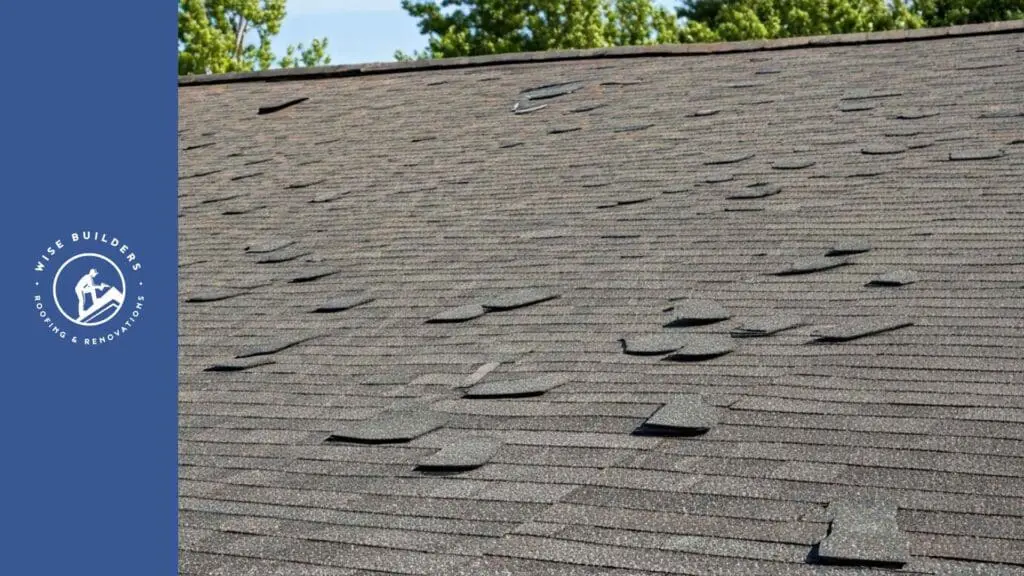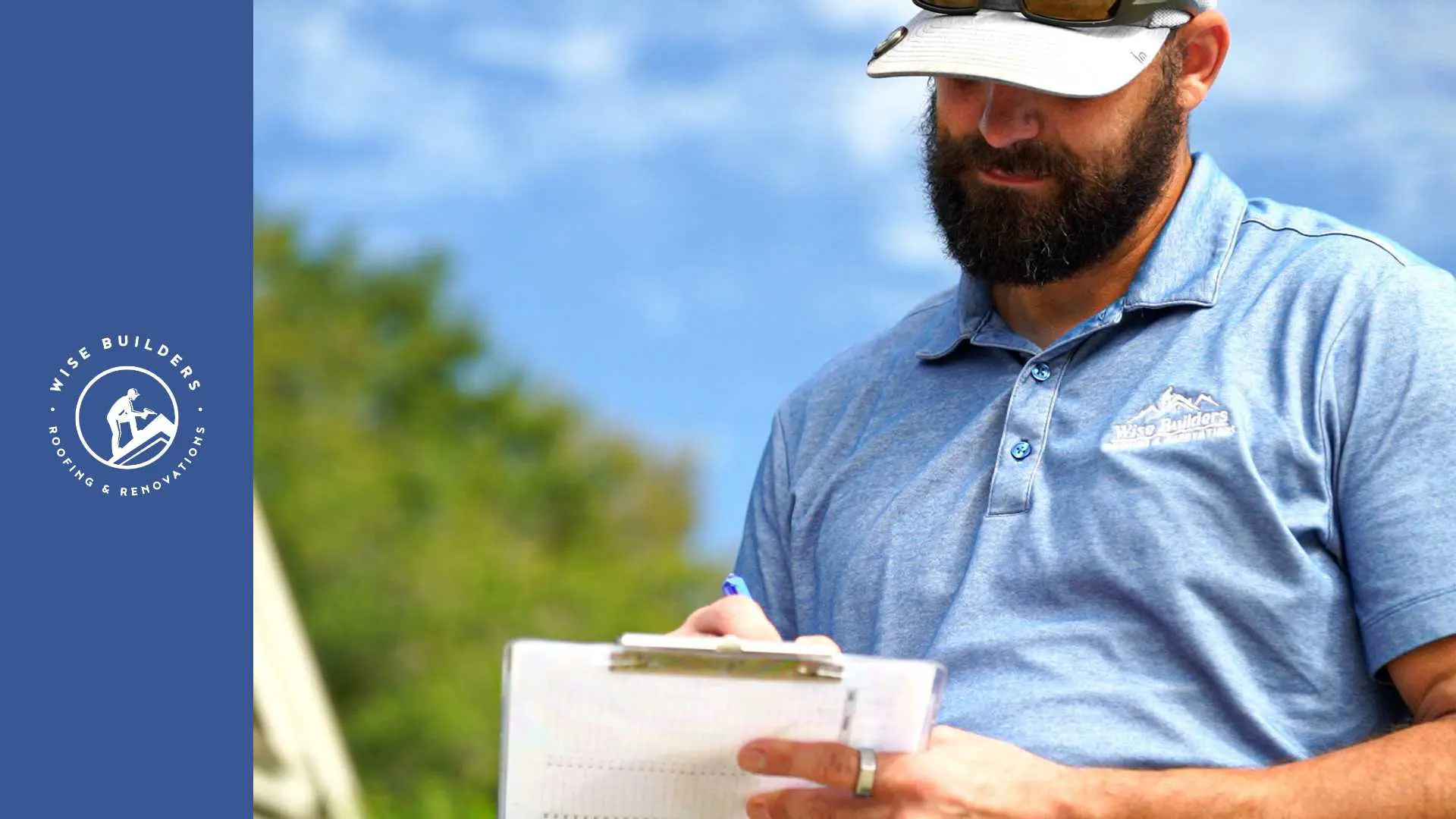
Key Highlights
- Wind damage to shingle roofs is a common issue faced by homeowners, particularly in areas prone to severe weather events.
- Recognizing the signs of such damage early on is crucial for preventing more extensive and costly repairs in the future.
- This comprehensive guide will explore the impact of wind on shingle roofs, common indicators of wind damage, and preventative measures to protect your home.
- We will equip you with the knowledge to identify potential problems and guide you on the necessary steps after a windstorm.
- Remember, consulting a professional roofing contractor is always recommended for a thorough assessment and effective solutions.
Introduction
Wind damage poses a significant threat to shingle roofs, a concern frequently addressed within the roofing industry. Understanding the number of issues related to the impact of high winds on shingle roofs is crucial for homeowners. Such knowledge enables proactive measures to mitigate potential damage and ensures the longevity of your roof. This blog post aims to shed light on identifying, assessing, and addressing wind damage to shingles.
The Basics of Wind Damage on Shingle Roofs

This is particularly true for roof edges, corners, and areas around roof penetrations like chimneys, where wind forces are amplified. Once the wind gets under the shingles, it can easily separate them from the roof, exposing your home to leaks and further damage.
Understanding How Wind Affects Roof Shingles
High winds exert pressure on roofs, creating an uplift force that can cause significant damage. According to the national weather service, the extent of damage depends on the wind speed, the shingle’s age and condition, and the roof’s design. As wind speed increases, so does the uplift force, making older or damaged shingles more susceptible to being torn off.
The uplift resistance method is a standard test method used to determine a shingle’s ability to withstand wind uplift. This test simulates various wind speeds to measure the strength reduction of a shingle under pressure. The results help determine the shingle’s wind resistance rating, indicating its suitability for specific wind conditions.
Investing in shingles with a higher wind resistance rating can significantly reduce the risk of wind damage, especially in areas prone to strong winds. It’s also important to consult with a roofing professional who can recommend the best shingles for your location’s specific wind conditions.
Identifying the Signs of Wind Damage
After a storm or high winds, it’s crucial to inspect your roof for any signs of roof wind damage. Early detection can save you from costly repairs down the line. Some signs of wind damage are obvious, such as missing shingles scattered around your yard. Other signs, however, may require a closer look.
Here are some key indicators of wind damage to look out for:
- Missing shingles: One of the most apparent signs, often visible from the ground.
- Lifted or curled shingles: Shingles that appear raised or whose edges are turning upwards.
- Damaged flashing: Look for cracks, gaps, or tears in the flashing around chimneys, vents, and skylights.
- Granule loss: Excessive granules (the rough, sandpaper-like surface of shingles) in your gutters or downspouts can indicate shingle damage.
- Interior leaks: Water stains on your ceiling or walls could stem from a wind-damaged roof.
If you notice any of these signs, contact a qualified roofing contractor to conduct a thorough inspection and recommend the appropriate course of action.
Detailed Inspection Techniques for Wind-Damaged Shingles
A detailed inspection by a roofing professional goes beyond a visual assessment. They use specific techniques to determine the extent of the damage accurately. These can include moisture meters to detect hidden leaks and drone photography for a comprehensive view of the roof’s condition, particularly in hard-to-reach areas.
Documentation is key during these inspections. The roofing contractor will typically note the type, location, and severity of damage, along with photographs. This information is crucial for insurance claims and for developing an effective repair strategy.
Checking for Curling, Lifting, or Missing Shingles
One of the most telling signs of wind damage to your roof is the presence of curling, lifting, or missing individual shingles. Curling occurs when the edges of the individual shingles start to bend upwards, making them susceptible to being lifted by wind. This is often a sign of aging or improper installation.
Lifting, on the other hand, happens when the wind gets underneath the shingle and forces it upwards, loosening its grip on the roof or fascia. This can expose the underlying roof deck to the elements, leading to leaks and water damage. In extreme cases, high winds can entirely rip off shingles, leaving sections of your roof vulnerable and requiring immediate attention.
Checking for these issues involves a careful visual inspection of your roof, paying close attention to the edges, corners, and areas around roof penetrations, where wind damage is more likely to occur. If you suspect you have any of these problems, it’s best to consult a professional roofing contractor for a comprehensive assessment.
Assessing the Impact of Debris and Granule Loss
During a windstorm, debris such as tree branches and other airborne objects can directly impact your roof, causing dents, punctures, and other forms of damage. These impacts can dislodge granules from asphalt shingles, exposing the underlying asphalt to the elements and reducing its lifespan.
Granule loss, even without visible damage to the shingle itself, can be detrimental. Granules act as a protective layer, shielding the asphalt from UV radiation and weather elements. The first place we examine for signs of granule loss is the exposed asphalt, which becomes susceptible to cracking, drying out, and ultimately, leaking.
Checking your gutters and downspouts after a windstorm for excessive granule buildup can be an early indicator of potential roof damage. While some granule loss over time is normal, significant accumulation after a storm warrants a professional roof inspection.
Immediate Steps to Take After Identifying Wind Damage
Discovering wind damage to your roof necessitates prompt action to prevent further damage and ensure your home’s safety. The first step involves documenting the damage thoroughly. Take clear photographs of the affected areas, noting the extent and location of the damage.
Next, contact your insurance company and report the damage. Provide them with the documentation you’ve gathered to initiate the claims process. While waiting for the insurance adjuster, consider contacting a reputable roofing contractor to provide a temporary solution, such as tarping, to mitigate further damage.
Documenting the Damage for Insurance Claims
If your roof has experienced wind damage, filing a homeowners insurance policy claim can help cover the cost of repairs. To support your claim, meticulously document the damage, providing comprehensive evidence to the insurance adjuster. Begin by photographing and videotaping all affected areas, capturing both close-up shots of specific damage and wider views of the roof’s overall condition.
Supplement visual documentation with a detailed list of damages, noting the type, location, and estimated size of each damaged area. Retain any receipts for temporary repairs, such as tarping, as these can strengthen your claim. Remember to review your insurance policy to understand your coverage limits, deductibles, and any specific documentation requirements for wind damage claims.
When the insurance adjuster arrives, cooperate fully, allowing them to thoroughly assess the damage. Providing accurate and detailed documentation strengthens your claim’s validity, increasing the likelihood of a favorable outcome and expediting the claims process.
Contacting Wise Builders Roofing for a Professional Assessment
When it comes to wind damage assessments and repairs, relying on a professional roofing contractor like Wise Builders Roofing is crucial. With their expertise in identifying and addressing wind-related issues, Wise Builders Roofing provides homeowners with the peace of mind they need during such stressful situations.
Their team of skilled professionals will conduct a thorough inspection of your roof, examining every aspect for signs of wind damage. From dislodged or missing shingles to damaged flashing and underlying structural issues, they will accurately assess the extent of the problem.
Wise Builders Roofing is committed to providing transparent and honest assessments. They will explain the necessary repairs, offer a detailed estimate, and work closely with your insurance company to ensure a seamless claims process. Don’t hesitate to contact Wise Builders Roofing for their expert advice and quality craftsmanship in restoring your roof to its former glory.
Preventative Measures to Protect Your Roof Against Wind Damage

Choosing wind-resistant shingles during installation or replacement significantly enhances your roof’s ability to withstand high winds. Proper installation techniques, including using adequate nails and sealant, are equally crucial in preventing wind uplift and ensuring your roof’s long-term performance.
Selecting Wind-Resistant Shingle Materials
When selecting roofing materials, particularly in regions susceptible to severe weather, prioritizing wind-resistant shingle materials is paramount. These specialized shingles are engineered to withstand high winds, offering superior protection for your home. Wind-resistant shingles typically feature enhanced adhesive strips, impact-resistant designs, and advanced locking mechanisms that prevent uplift and ensure secure attachment.
Asphalt shingles, a popular roofing option for an asphalt shingle roof, are available in various wind resistance ratings. Look for shingles with a Class 4 impact resistance rating, the highest designation, for optimal protection against wind-driven debris. Consult with a reputable roofing contractor for guidance on selecting the best wind-resistant shingle materials tailored to your location’s specific wind conditions and your home’s architectural design.
By making informed decisions about shingle selection, you invest in a resilient roof that safeguards your home from the destructive forces of severe weather. Consulting with a professional roofing contractor ensures proper installation and maximizes the wind-resistance capabilities of your chosen materials.
Regular Maintenance Tips to Enhance Roof Durability
Maintaining your roof’s integrity and safeguarding it against the damaging effects of strong winds requires a proactive approach to regular maintenance. A well-maintained roof is far less susceptible to wind damage, and water intrusion, extending its lifespan and saving you from costly repairs in the long run.
Start by establishing a routine of inspecting your roof, particularly after severe weather events. Look for missing, cracked, or curled shingles, and address these issues promptly. Pay close attention to the flashing around chimneys, vents, and skylights, ensuring it remains intact and properly sealed.
Keep your gutters and downspouts clear of debris to allow for proper water drainage. Clogged gutters can lead to water buildup, adding unnecessary weight to your roof and increasing the risk of wind damage. Trimming overhanging tree branches that could potentially fall and damage your roof is also an essential aspect of routine roof maintenance.
Conclusion
In conclusion, understanding wind damage to shingles is crucial for preserving the integrity of your roof. By recognizing the signs of wind damage, taking immediate action, and implementing preventative measures like selecting wind-resistant shingle materials and regular maintenance, you can safeguard your roof against potential harm. If you suspect wind damage, document it for insurance purposes and consider seeking a professional assessment from Wise Builders Roofing to ensure proper evaluation and repairs. Protect your investment in your home by staying informed and proactive when it comes to wind damage and your roof’s health.
At Wise Builders, We ensure our clients receive the best possible outcomes. Our commitment to quality workmanship and customer satisfaction is unwavering, making us the top choice for residential Roofing services in our community.
Frequently Asked Questions
Can Wise Builders Roofing help with insurance claims for wind damage?
Yes, as a professional roofer, Wise Builders Roofing can assist homeowners throughout the insurance claims process. Their team can assess the storm event damage, provide documentation for your homeowner’s insurance policy, and work directly with your insurer to facilitate a smooth and successful claim.







